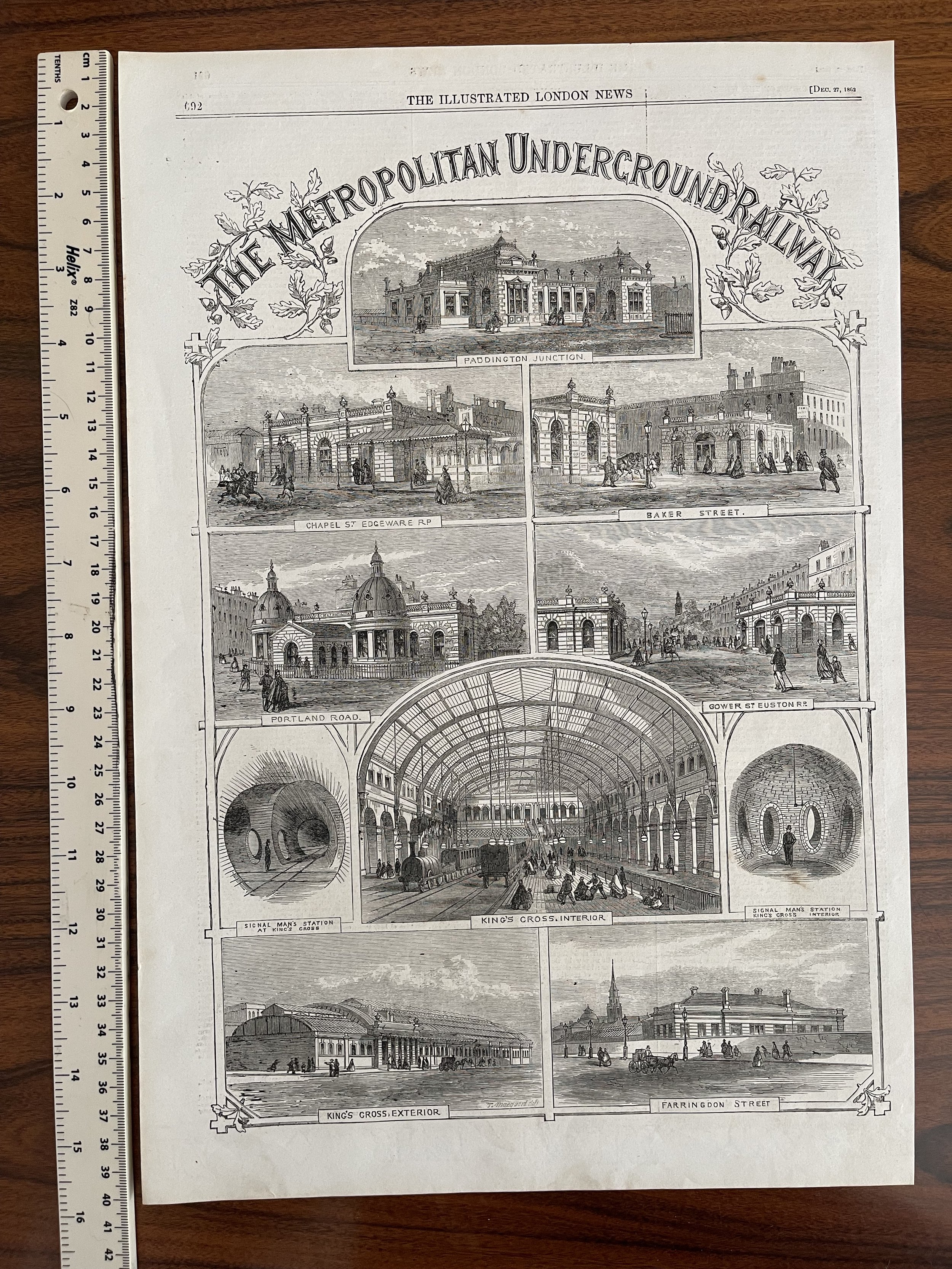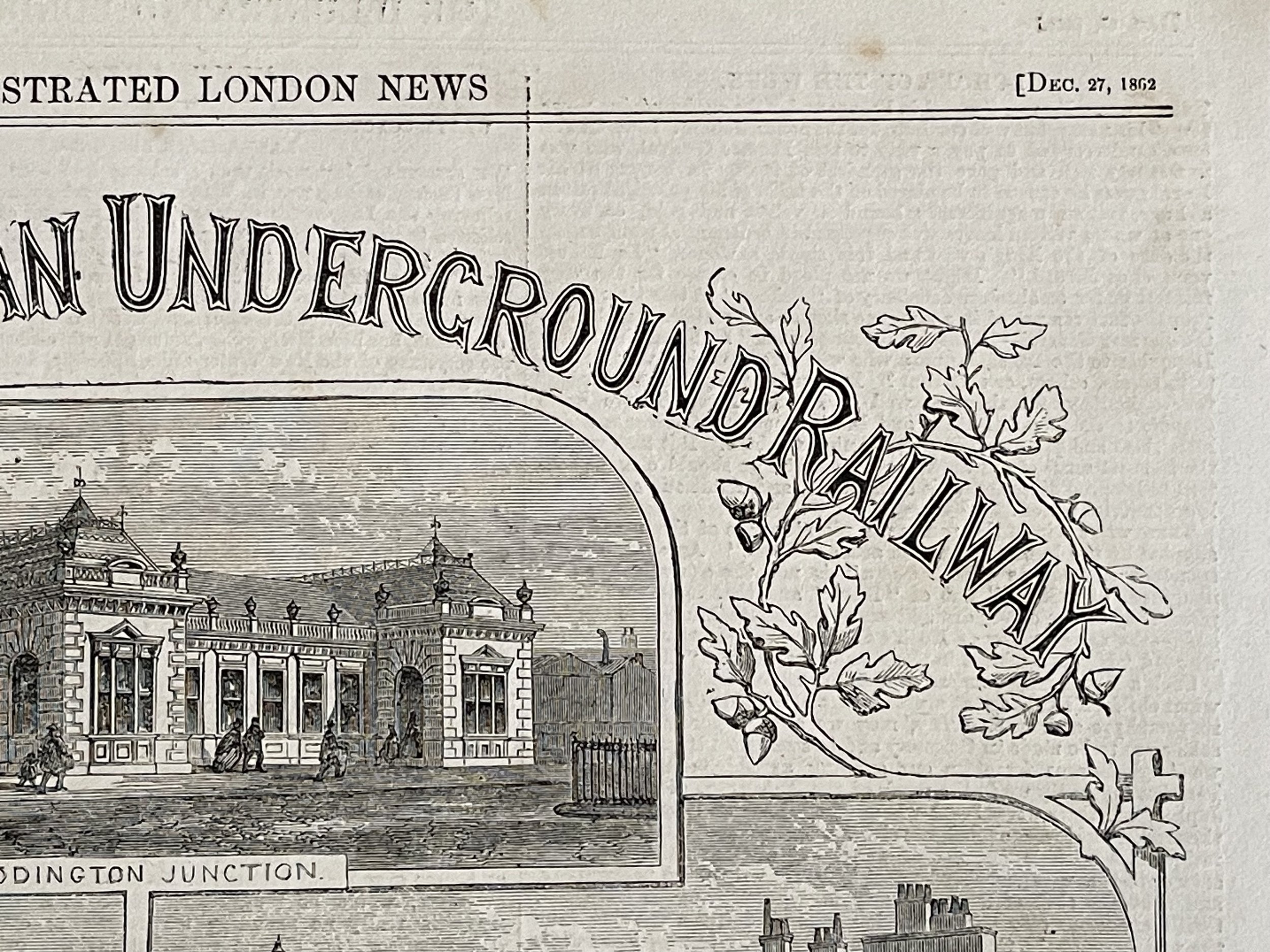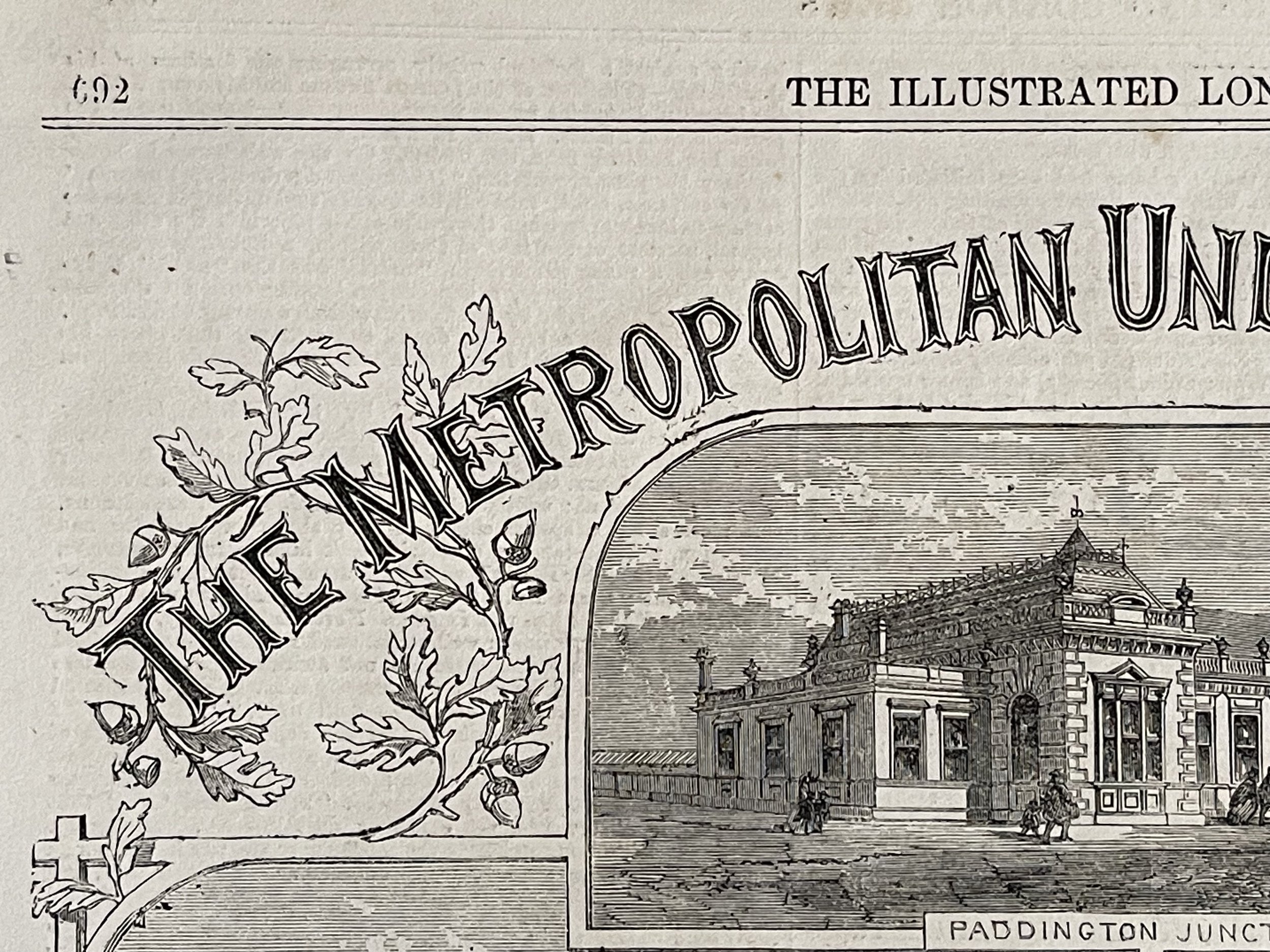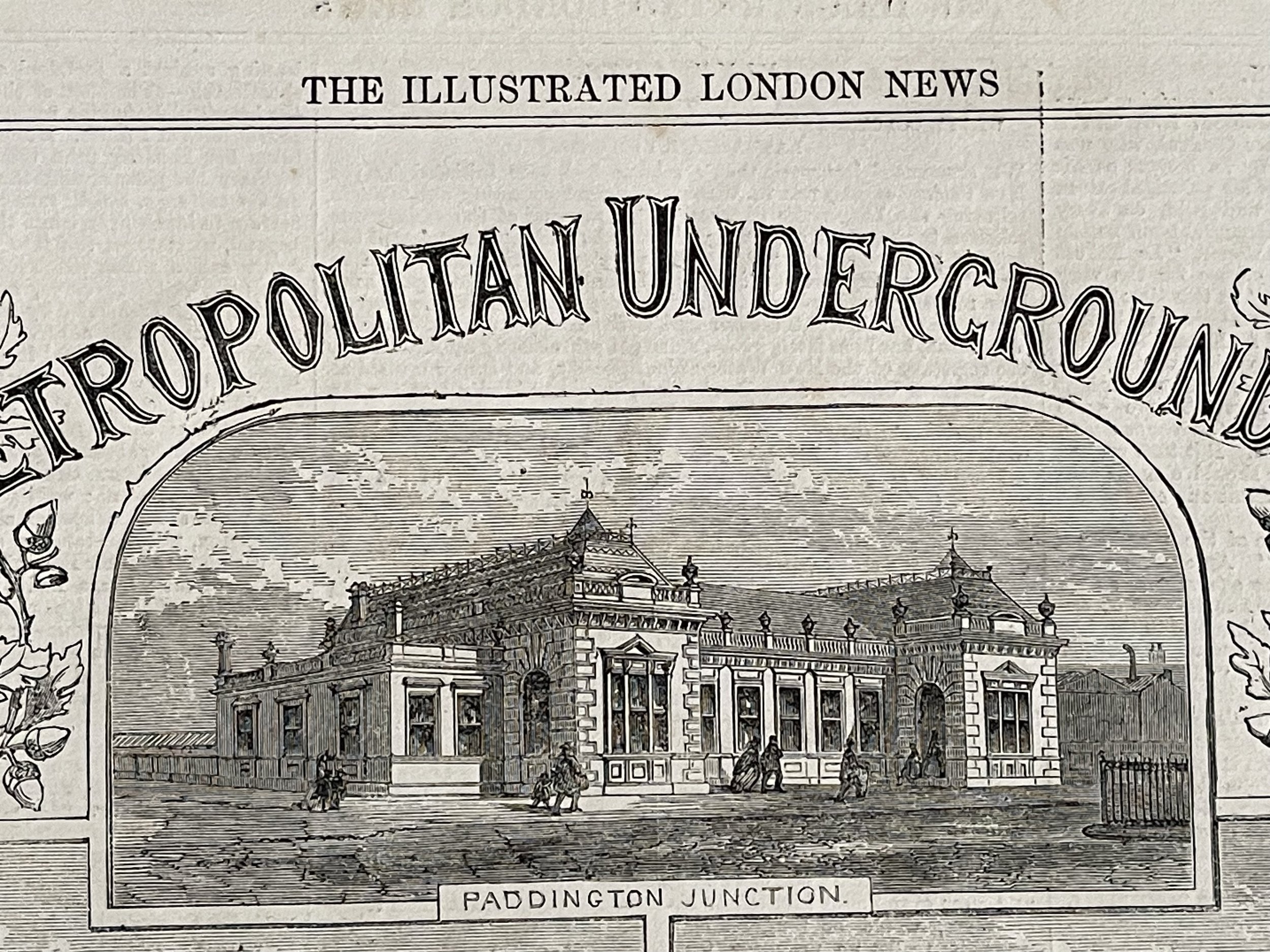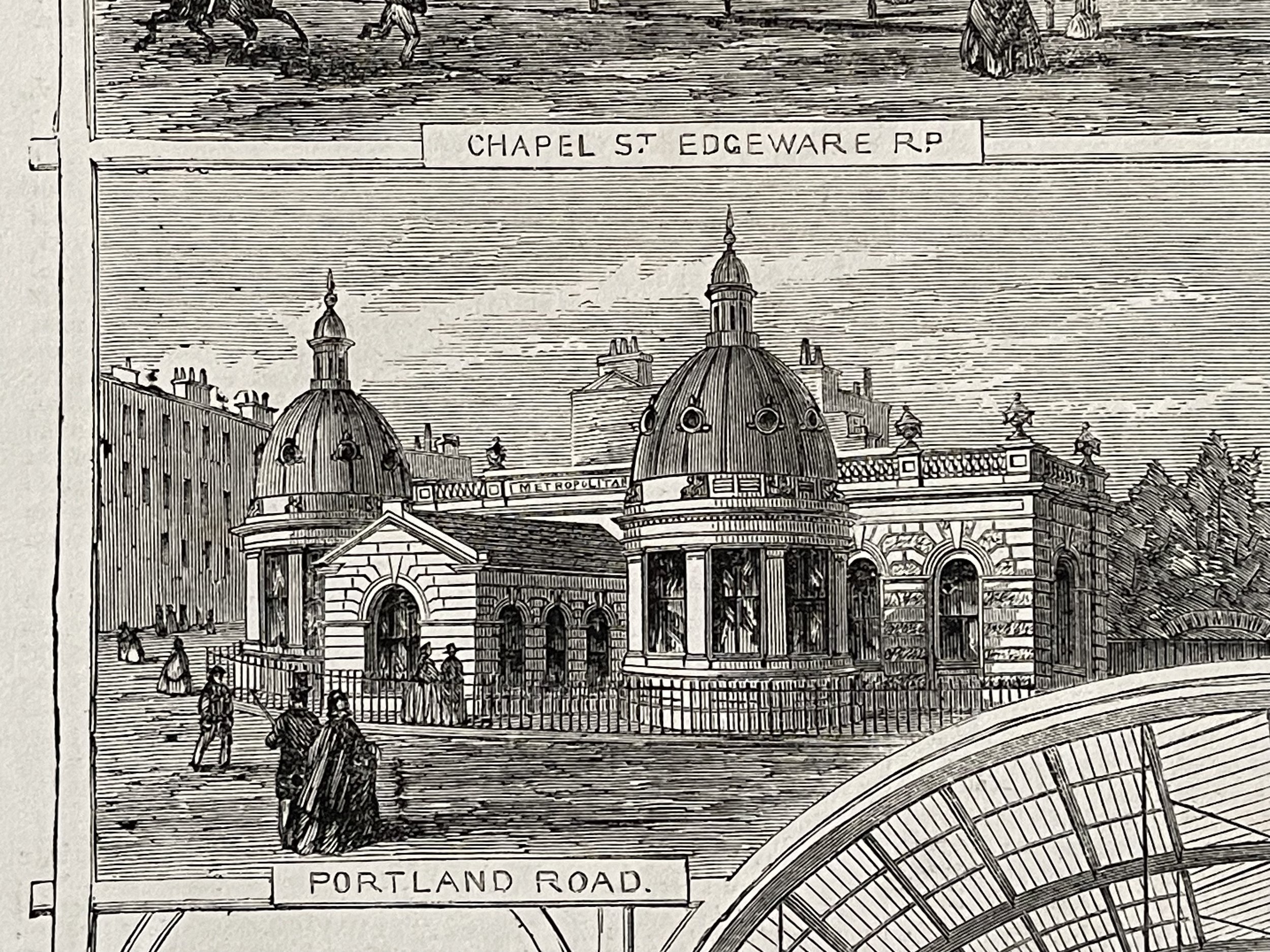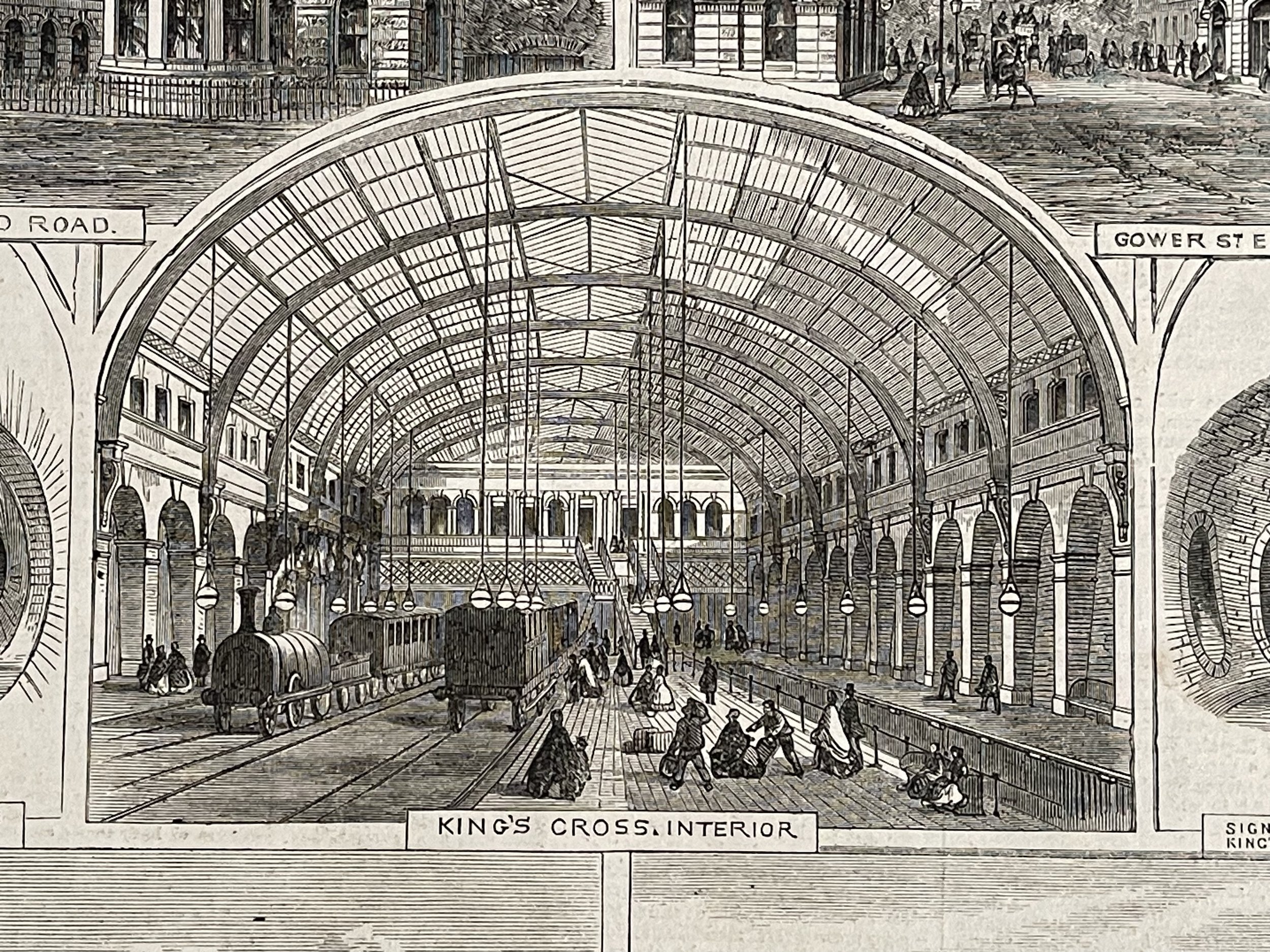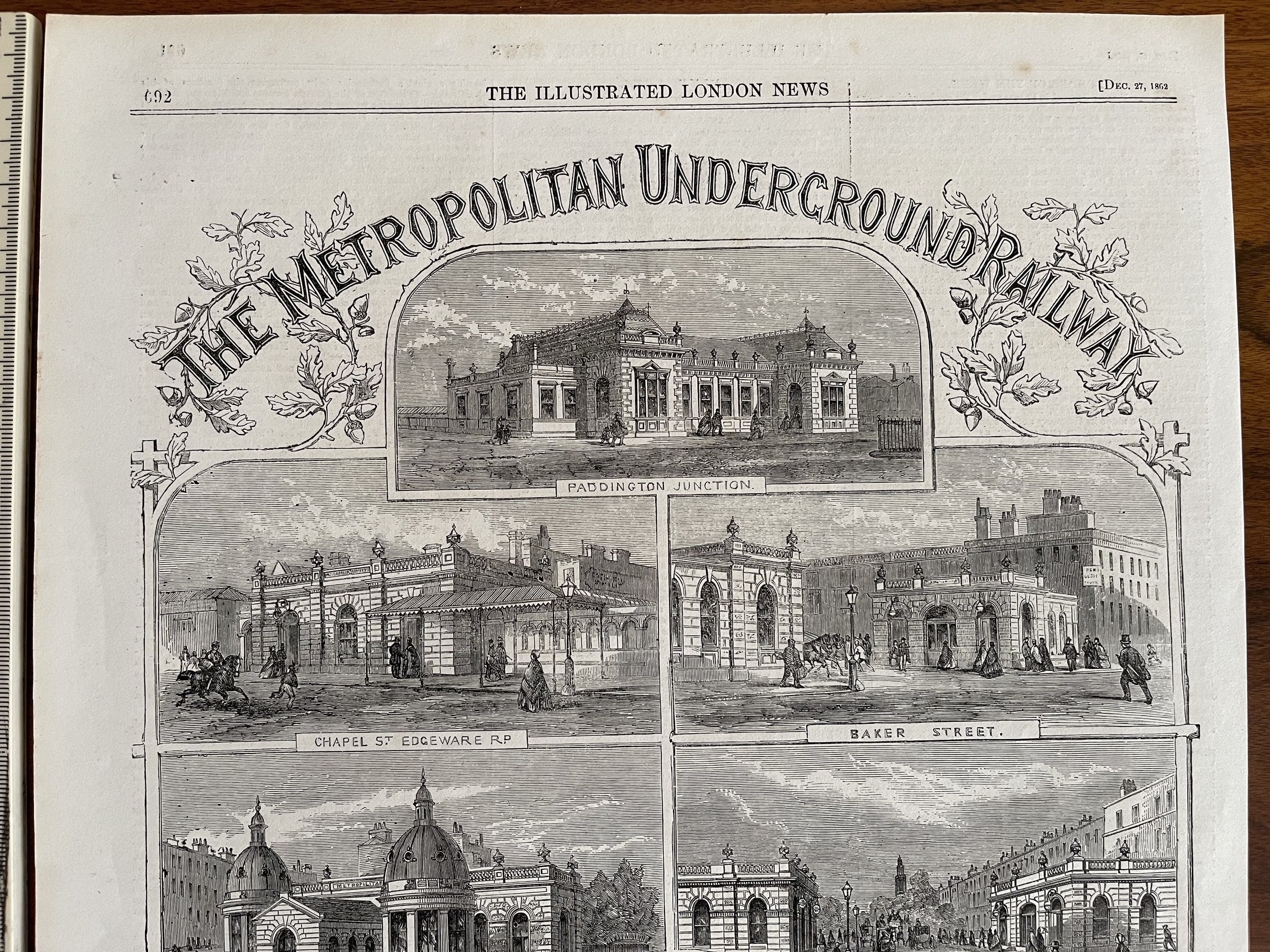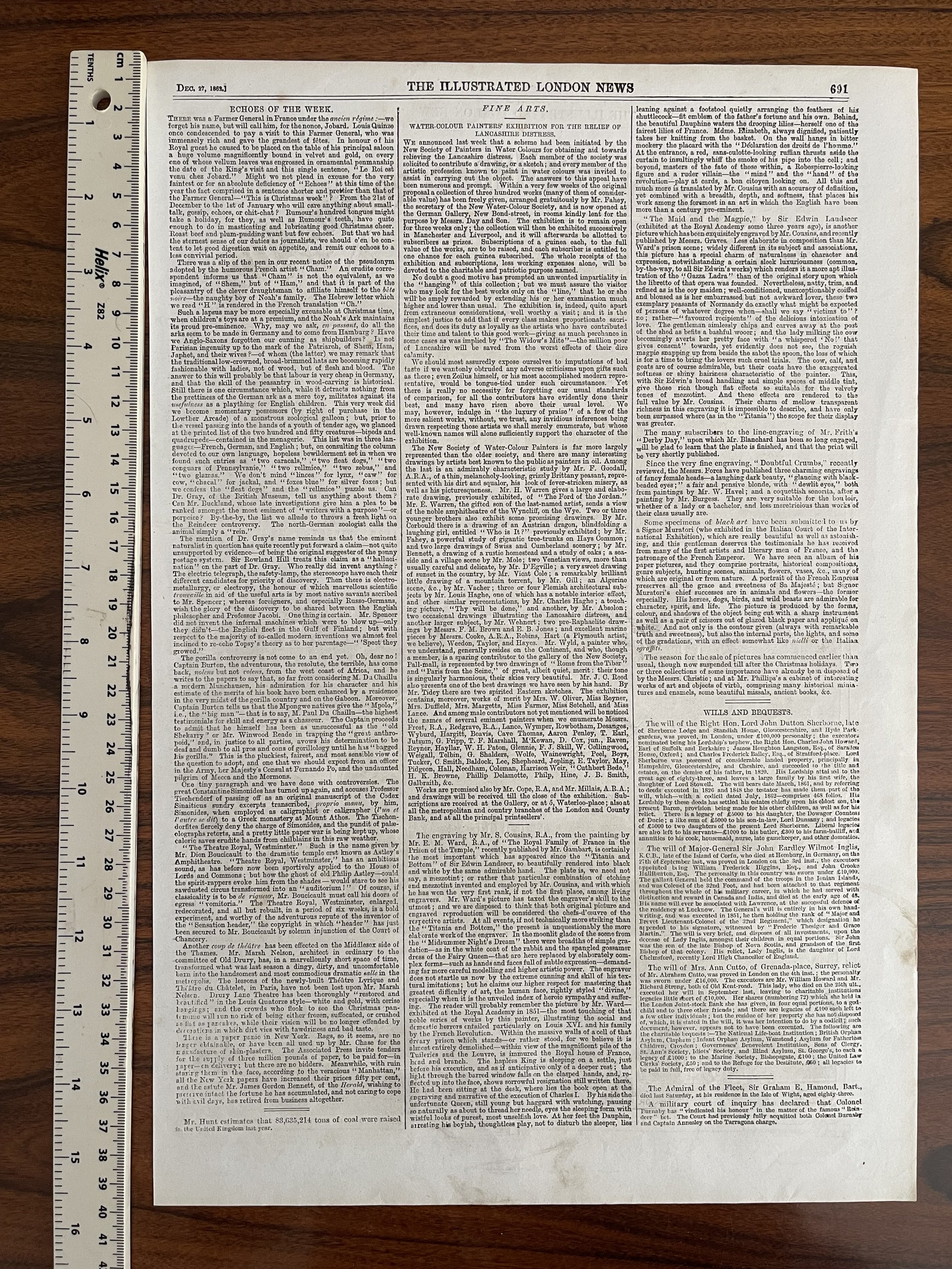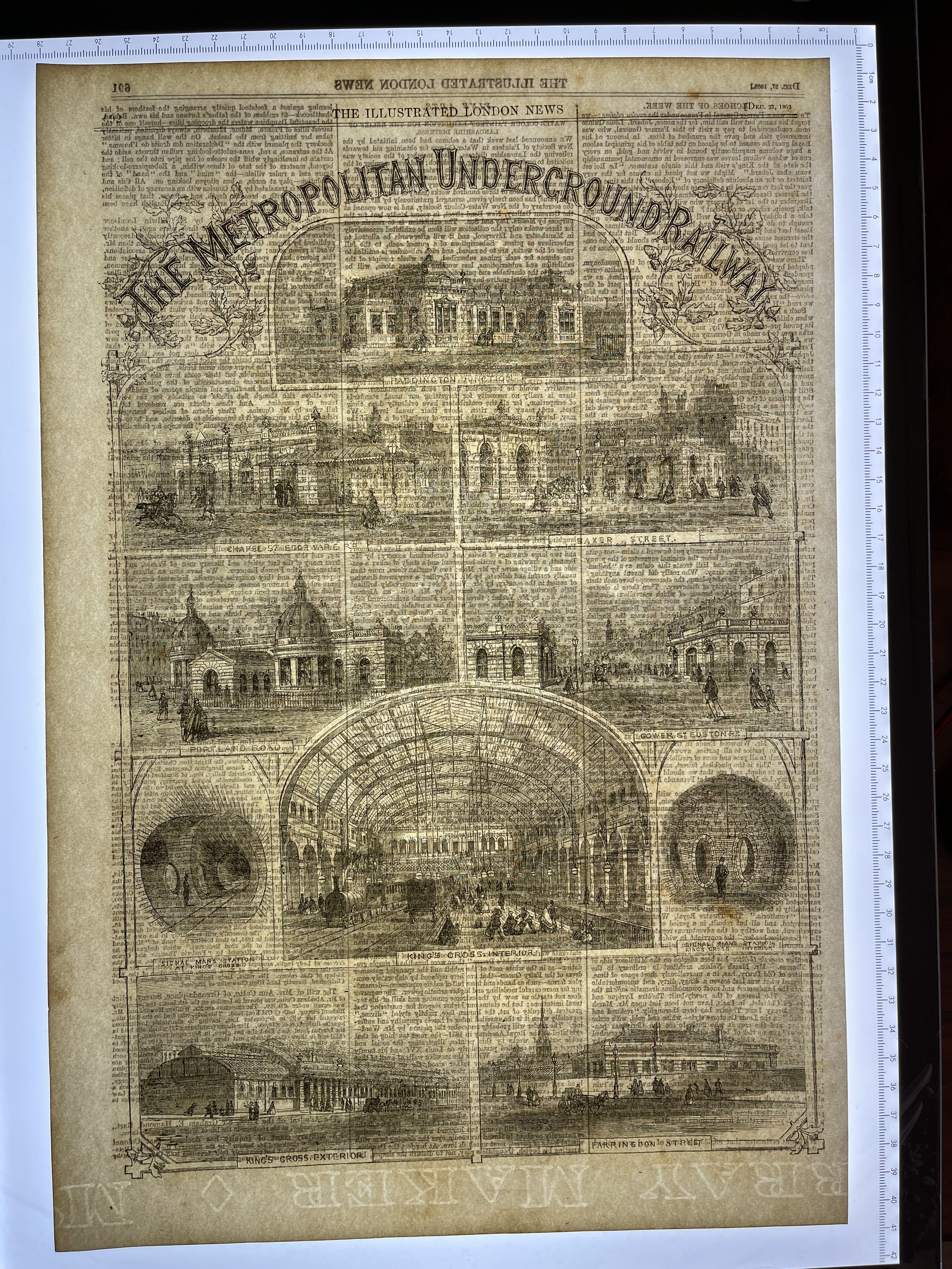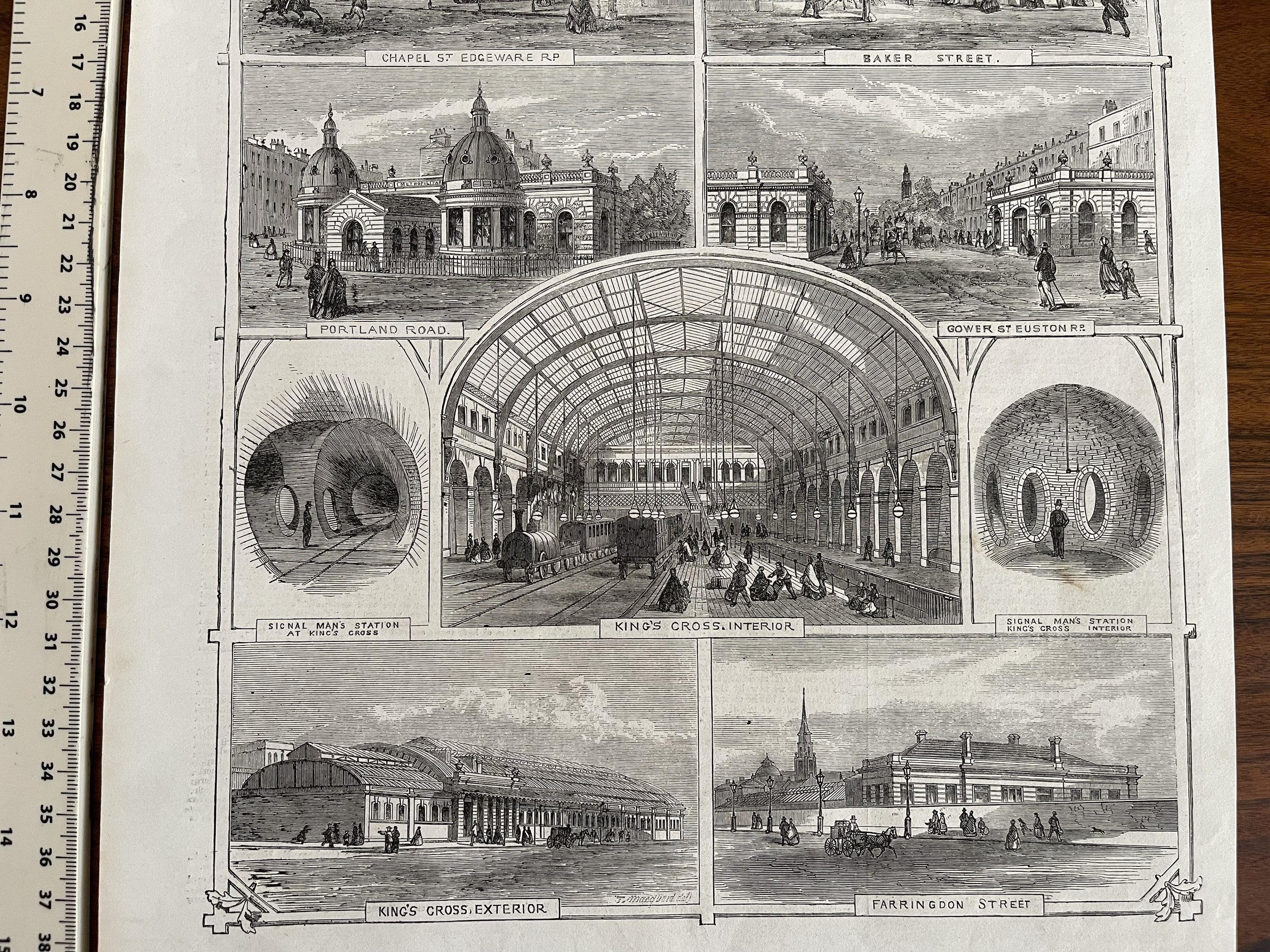Metropolitan Underground Railway stations - Illustrated London News - 1862
Description "The Metropolitan Underground Railway".
Date 27 December 1862
Source The Illustrated London News, Issue 1181, page 692 - Very Collectable for Rail Enthusiasts
Excellent condition - Publisher Watermark also visible in footer of Lightbox photo.
In the early 19th Century as many as 200,000 workers travelled by foot each day into the City of London . London did what it's always done and continued growing to the point that something had to be done. Numerous attempts to build a railway linking these stations to the City were blocked by the government due to the carnage it would have created cutting a new rail line through an already built up city. Instead an underground railway was proposed - the first of its kind anywhere in the world.
Like with most pioneering projects there was little interest to start with but the political and business wranglings of those early London Underground pioneers eventually pulled it off. The "cut-and-cover" technique was used to build the parts that needed to go underground. This involved digging a deep trench, laying the track and then building a 'roof' over the whole thing.
The 6km Metropolitan Railway from Paddington to Farringdon opened to the public for the first time on Saturday, January 10, 1863. By then the momentum was building and an extension down to Blackfriars, as well as westwards towards the growing suburbs of Shepherd's Bush and Hammersmith, was opened soon afterwards. Branches also reached into Kensington. The success of the Metropolitan Railway spoke for itself and soon rival rail companies were scrambling for a piece of this new type of underground action. Competition stiffened but still the vision of the earlier pioneers paid off.
By 1880, the line had grown another arm, this time extending from Baker Street to the far-off town of Harrow. At this time the new transport links allowed huge parts of London to grow and nowhere was this more true than for the sprawling boroughs of North West London. The railway companies contributed actively in this expansion as well. When the Metropolitan Railway opened its engineer and gas works in Neasden in the 1880s it built over 100 cottages for its employees as well as shops, a school and a church. Although the company was over its rail lines lived on. Parts of the Metropolitan Railway were absorbed into other lines but the bulk of it became the Metropolitan Line we know today. The trains all the way up to Verney Junction were dropped, however, with passengers now only able to get as far as Chesham and Amersham.
Despite it's disappearance, the pioneers behind the Metropolitan Railway defined the early London Underground. Their legacy is the world-class transport system we have today. Throughout the 1880s and 1890s the Metropolitan Railway either bought or built track which went all the way up to Verney Junction. In 1897 you could get a train from New Cross in South East London all the way to Verney Junction in Buckinghamshire, 50 miles away. It's so far into Buckinghamshire that it's not far from Milton Keynes. Although, of course, it would be another 70 years before Milton Keynes and all its roundabouts would be built.
The slow decline of the Metropolitan Railway As the railway rolled on into the new century it faced a new host of challenges. Competitors were catching up and passengers were finding alternate transport options. A movement slowly grew throughout the first decades of the 20th Century to bring all the public transport systems, including the Metropolitan Railway, under one company. The Metropolitan Railway remained stubbornly independent until 1933 when all the railway's assets were absorbed into the London Passenger Transport Board, the precursor to Transport for London.
Description "The Metropolitan Underground Railway".
Date 27 December 1862
Source The Illustrated London News, Issue 1181, page 692 - Very Collectable for Rail Enthusiasts
Excellent condition - Publisher Watermark also visible in footer of Lightbox photo.
In the early 19th Century as many as 200,000 workers travelled by foot each day into the City of London . London did what it's always done and continued growing to the point that something had to be done. Numerous attempts to build a railway linking these stations to the City were blocked by the government due to the carnage it would have created cutting a new rail line through an already built up city. Instead an underground railway was proposed - the first of its kind anywhere in the world.
Like with most pioneering projects there was little interest to start with but the political and business wranglings of those early London Underground pioneers eventually pulled it off. The "cut-and-cover" technique was used to build the parts that needed to go underground. This involved digging a deep trench, laying the track and then building a 'roof' over the whole thing.
The 6km Metropolitan Railway from Paddington to Farringdon opened to the public for the first time on Saturday, January 10, 1863. By then the momentum was building and an extension down to Blackfriars, as well as westwards towards the growing suburbs of Shepherd's Bush and Hammersmith, was opened soon afterwards. Branches also reached into Kensington. The success of the Metropolitan Railway spoke for itself and soon rival rail companies were scrambling for a piece of this new type of underground action. Competition stiffened but still the vision of the earlier pioneers paid off.
By 1880, the line had grown another arm, this time extending from Baker Street to the far-off town of Harrow. At this time the new transport links allowed huge parts of London to grow and nowhere was this more true than for the sprawling boroughs of North West London. The railway companies contributed actively in this expansion as well. When the Metropolitan Railway opened its engineer and gas works in Neasden in the 1880s it built over 100 cottages for its employees as well as shops, a school and a church. Although the company was over its rail lines lived on. Parts of the Metropolitan Railway were absorbed into other lines but the bulk of it became the Metropolitan Line we know today. The trains all the way up to Verney Junction were dropped, however, with passengers now only able to get as far as Chesham and Amersham.
Despite it's disappearance, the pioneers behind the Metropolitan Railway defined the early London Underground. Their legacy is the world-class transport system we have today. Throughout the 1880s and 1890s the Metropolitan Railway either bought or built track which went all the way up to Verney Junction. In 1897 you could get a train from New Cross in South East London all the way to Verney Junction in Buckinghamshire, 50 miles away. It's so far into Buckinghamshire that it's not far from Milton Keynes. Although, of course, it would be another 70 years before Milton Keynes and all its roundabouts would be built.
The slow decline of the Metropolitan Railway As the railway rolled on into the new century it faced a new host of challenges. Competitors were catching up and passengers were finding alternate transport options. A movement slowly grew throughout the first decades of the 20th Century to bring all the public transport systems, including the Metropolitan Railway, under one company. The Metropolitan Railway remained stubbornly independent until 1933 when all the railway's assets were absorbed into the London Passenger Transport Board, the precursor to Transport for London.
Description "The Metropolitan Underground Railway".
Date 27 December 1862
Source The Illustrated London News, Issue 1181, page 692 - Very Collectable for Rail Enthusiasts
Excellent condition - Publisher Watermark also visible in footer of Lightbox photo.
In the early 19th Century as many as 200,000 workers travelled by foot each day into the City of London . London did what it's always done and continued growing to the point that something had to be done. Numerous attempts to build a railway linking these stations to the City were blocked by the government due to the carnage it would have created cutting a new rail line through an already built up city. Instead an underground railway was proposed - the first of its kind anywhere in the world.
Like with most pioneering projects there was little interest to start with but the political and business wranglings of those early London Underground pioneers eventually pulled it off. The "cut-and-cover" technique was used to build the parts that needed to go underground. This involved digging a deep trench, laying the track and then building a 'roof' over the whole thing.
The 6km Metropolitan Railway from Paddington to Farringdon opened to the public for the first time on Saturday, January 10, 1863. By then the momentum was building and an extension down to Blackfriars, as well as westwards towards the growing suburbs of Shepherd's Bush and Hammersmith, was opened soon afterwards. Branches also reached into Kensington. The success of the Metropolitan Railway spoke for itself and soon rival rail companies were scrambling for a piece of this new type of underground action. Competition stiffened but still the vision of the earlier pioneers paid off.
By 1880, the line had grown another arm, this time extending from Baker Street to the far-off town of Harrow. At this time the new transport links allowed huge parts of London to grow and nowhere was this more true than for the sprawling boroughs of North West London. The railway companies contributed actively in this expansion as well. When the Metropolitan Railway opened its engineer and gas works in Neasden in the 1880s it built over 100 cottages for its employees as well as shops, a school and a church. Although the company was over its rail lines lived on. Parts of the Metropolitan Railway were absorbed into other lines but the bulk of it became the Metropolitan Line we know today. The trains all the way up to Verney Junction were dropped, however, with passengers now only able to get as far as Chesham and Amersham.
Despite it's disappearance, the pioneers behind the Metropolitan Railway defined the early London Underground. Their legacy is the world-class transport system we have today. Throughout the 1880s and 1890s the Metropolitan Railway either bought or built track which went all the way up to Verney Junction. In 1897 you could get a train from New Cross in South East London all the way to Verney Junction in Buckinghamshire, 50 miles away. It's so far into Buckinghamshire that it's not far from Milton Keynes. Although, of course, it would be another 70 years before Milton Keynes and all its roundabouts would be built.
The slow decline of the Metropolitan Railway As the railway rolled on into the new century it faced a new host of challenges. Competitors were catching up and passengers were finding alternate transport options. A movement slowly grew throughout the first decades of the 20th Century to bring all the public transport systems, including the Metropolitan Railway, under one company. The Metropolitan Railway remained stubbornly independent until 1933 when all the railway's assets were absorbed into the London Passenger Transport Board, the precursor to Transport for London.
Code : A212
Cartographer : Cartographer / Engraver / Publisher: London Illustrated News
Date : Publication Place / Date - 1862
Size : Sheet size: Image Size: 27 x 40 cm
Availability : Available
Type - Genuine - Antique
Grading A+
Where Applicable - Folds as issued. Light box photo shows the folio leaf centre margin hinge ‘glue’, this is not visible otherwise.
Tracked postage, in casement. Please contact me for postal quotation outside of the UK.
